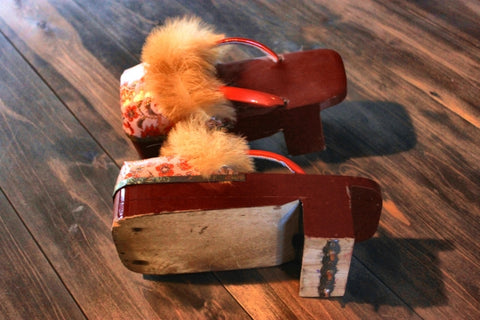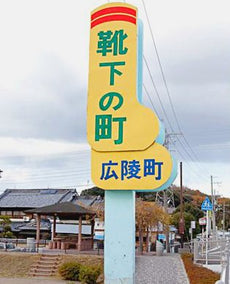Japanese Footwear Geta & Zori
What is Geta?
The origin of geta can be traced back to ancient Japan, possibly as early as the Yayoi period (10C BC - 3C AD).
The design of geta evolved from more primitive wooden sandals. They typically consist of a flat wooden sole (dai) elevated by two supporting pieces (ha or teeth) underneath. These teeth raise the wearer above the ground, providing protection from dirt, mud, and rain. Geta are often associated with the distinctive "clacking" sound they make when walking, which comes from the wooden teeth striking the ground. The sound is usually described as kara koro or karan koron in Japanese.

What is Zori?
Zori are made of a variety of materials depending on its style including cloth, rice straw, other natural materials, or polyurethane.
They are characterized by a flat sole which can vary in thickness and material, with some being more formal and others more casual. The ones made of cloth are typically worn at home instead of slippers.

What are the major differences between Geta and Zori?
Geta:
- made of wood
- raised wooden sole
- likely to be coordinated with a more casual style such as a yukata (casual summertime kimono) during summer festivals or even with regular clothes
- make sounds when walking because of its teeth
Zori:
- material varies: cloth, leather, polyurethane, vinyl, rice straws, etc.
- flat sole
- used for more formal occasions such as tea ceremonies or weddings
- do not make sounds because of the flat sole
My personal experience of Geta and Zori
I grew up with my grandparents and remember seeing my grandmother’s yukigeta (yuki means snow) stored in our garage. That was a variation of geta that comes with a toe cover for snow so your feet don’t get cold. Later, I found out that this type of geta is only available in snowy locations.

You can wear a pair of Geta with your everyday outfit instead of sandals. One thing I’ve noticed wearing Geta on normal paved sidewalks causes them to wear out easily because of the wooden material and small rocks get stuck into the soles. Moreover, the surface of the geta is flat, so it doesn’t provide any arch support and gets tiring if you walk for a long time.
On the other hand, Zori is relatively easy to use since many of them have some kind of cushioning on the surface, so they are soft on your feet. It’s likely that you’re pairing Zori with a kimono, so you don’t usually walk too fast or too spritely. When I lived in Japan, I walked around town with a friend for a day while wearing Zori; and didn’t feel tired. If you’ve never worn one, it’ll take time to get used to it, however the experience is new and refreshing!
Want to try one?
If you ever get a chance to visit Japan, both geta and zori would make a fun souvenir. Personally, I recommend getting a more durable variant of Zori since those types are versatile. Moreover as mentioned earlier, geta wears out quicker especially on paved roads and might be hard on your feet. You can also find knitted cotton zori that are often worn indoors.
Even if you are not comfortable trying out these new types of footwear, be sure to try out our Ninja Socks collection. They will add a new flare to your day!

